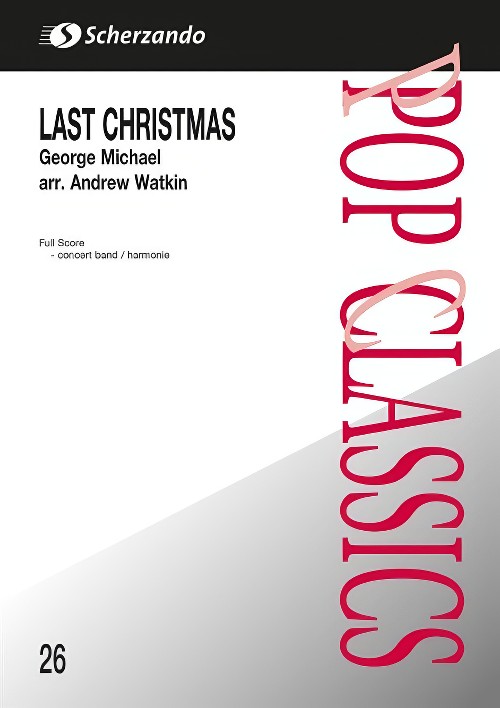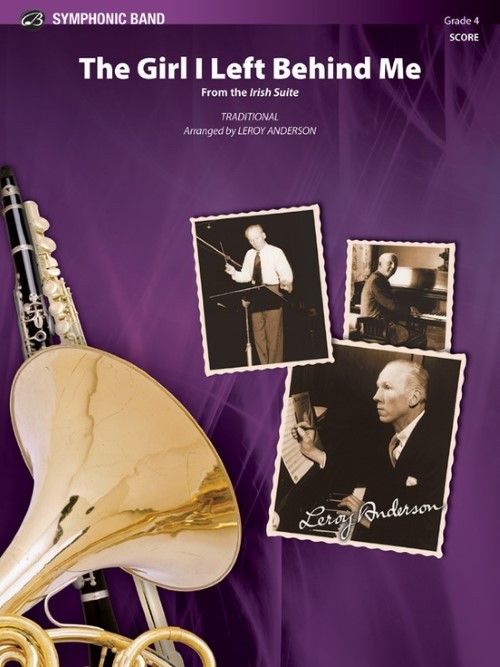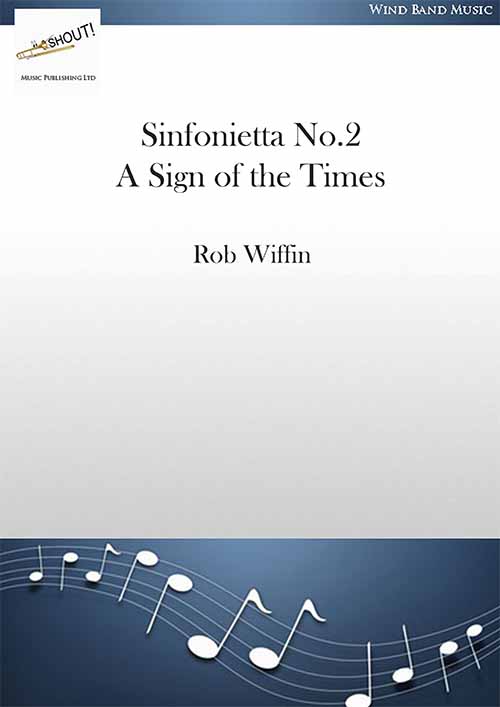Results
-
 £80.99
£80.99The Last to Defend - David Shaffer
An excellent choice for contest or concert performances, this impressive piece is quite playable and yet still retains the energy and vitality long associated with Shaffer's compositions. Certain to be a favorite of bands and audiences everywhere!
Estimated dispatch 7-14 working days
-
 £149.99
£149.99The Last Of The Mohicans - T. Jones
This Hollywood blockbuster from 1962, is an historic and epic drama that turned out to be a massive box-office hit, despite the unknown cast. Its success can undoubtedly be attributed in part to the excellent soundtrack. Erik Mast has made a wonderful arrangement of the soundtrack which has become a masterpiece in its own right.
Estimated dispatch 7-14 working days
-
 £84.99
£84.99Last Christmas (Concert Band - Score and Parts) - Michael, George - Watkin, Andrew
George Michael has been in the pop charts for may years, initially with the group Wham and later as a solo artist. Last Christmas was one of the last songs written whilst still in Wham and has now become a Christmas classic.Duration: 3:00
Estimated dispatch 7-14 working days
-
 £7.00
£7.00TUNES FROM THE TRENCHES (SSA vocal score) - Lawson, Peter
For SSA choir and orchestra or concert band, or choir and piano.A non-stop medley of tunes from World War One from recruiting through to the Last Post. This arrangement can be performed by a choir with either an orchestra, band or piano accompaniment. There are different choral versions available for Mixed Voice Choir - both SATB (GM131) and, for those with a shortage of male voices, SA+Men (GM134) - for Upper Voice Choir (SSA - GM132) and for Male Voice Choir (TTBB - GM133). The orchestra score and parts (GMCP020) can be used either on its own or to accompany a choir.The recruiting song "Your King and Country Want You" starts us off followed by "Goodbye, Dolly Gray" as the soldiers leave for war. "Belgium put the Kibosh on the Kaiser" is followed by some proper trench songs - various lyrics were improvised by the soldiers!! - "Three German Officers crossed the Rhine" and "They were only playing Leap-Frog". "The Bells of Hell go Ting-a-ling-a-ling" leads to strains of "Stille Nacht" recalling the Christmas truce. "When this Lousy War is Over" and "There's no place like Home" are balanced by "Land of Hope and Glory" before the Americans arrive with "The Caissons go Rolling Along" and "Over There". "It's a Long Way to Tipperary" brings us towards a rousing finish save for an optional "Last Post-lude" to end reflectively.
Estimated dispatch 7-14 working days
-
 £80.95
£80.95The Girl I Left Behind Me (from The Irish Suite) (Concert Band - Score and Parts) - Anderson, Leroy
Re-released with a new full score and parts, this is the last movement of Anderson's "Irish Suite" drawn from familiar Irish folk tunes. The Girl I Left Behind Me is a driving energetic conclusion to Anderson's suite or any concert program as a stand-alone work. The movements available are:The Irish WasherwomanThe Minstrel BoyThe Rakes of MallowThe Wearing of the GreenThe Last Rose of SummerThe Girl I Left Behind
Estimated dispatch 7-14 working days
-
£136.00
Last Run - David R. Holsinger
Celebrated composer and long-time railroad aficionado David Holsinger captures in music the romance and power of a favorite diesel locomotive in this descriptive musical portrait. The birth, life, and demise of one of the first departures of the steam generation is depicted in this picturesque and invigorating work. Mature bands will enjoy the challenge of telling the story of the "Last Run!"
Estimated dispatch 7-14 working days
-
£179.00
The Last Of The Mohicans - Trevor Jones - John Glenesk Mortimer
Estimated dispatch 10-14 working days
-
£118.00
You're The First, The Last, My Everything - Barry White - Ted Parson
Estimated dispatch 10-14 working days
-
£70.99
The Last Of The Mohicans
Estimated dispatch 10-14 working days
-
 £99.95
£99.95Sinfonietta No.2 - A Sign of the Times (Concert Band - Score and Parts) - Wiffin, Rob
It was an interesting challenge to return to the form of a sinfonietta some twenty years after the last one. This work is not hugely problematic to play but was written without regard for technical demands, following a series of compositions that needed to take difficulty level into consideration. The work has five percussion parts but the tuned percussion, although desirable, can be omitted. As for the band parts, Oboe 2 is largely covered elsewhere but the colour of the cor anglais would be a definite enhancement to the overall sound. The work was written in 2025 when it seemed as if the world was a particularly volatile place.The first movement 'Foment' seeks to capture that menacing mood of unrest and the potential for violence that seemed to erupt without warning and without efforts to contain it from warmongers posing as peacemakers. The music is severe and focussed with just a short scherzo-like episode of levity to balance the quasi-military mood.'A Dream of Peace' takes a few moments to contemplate a different, more peaceful world and several ideas are considered before settling on the slow waltz-like melody. This uses a very tonal language but is given a particular hue by its use of sevenths and ninths and there are moments of stress which disrupt the tranquillity.In 'Call to Arms' the warlike mood returns with a sense of restless energy that drives the music to its conclusion.- Rob WiffinDuration: 14.00
Estimated dispatch 7-14 working days
